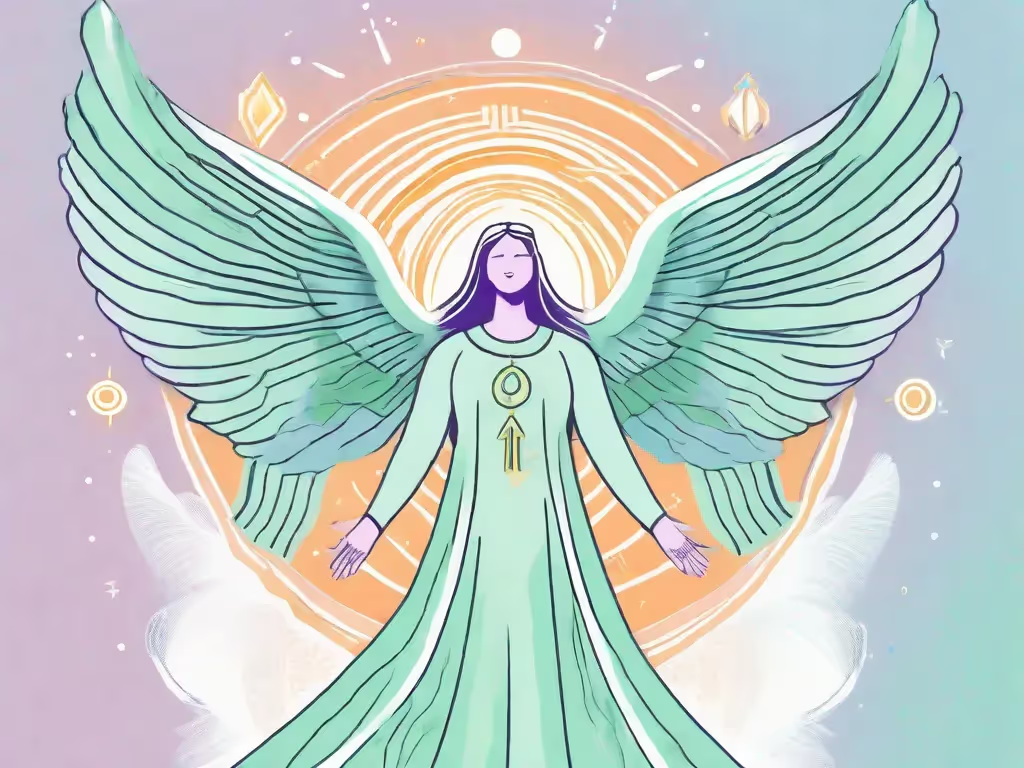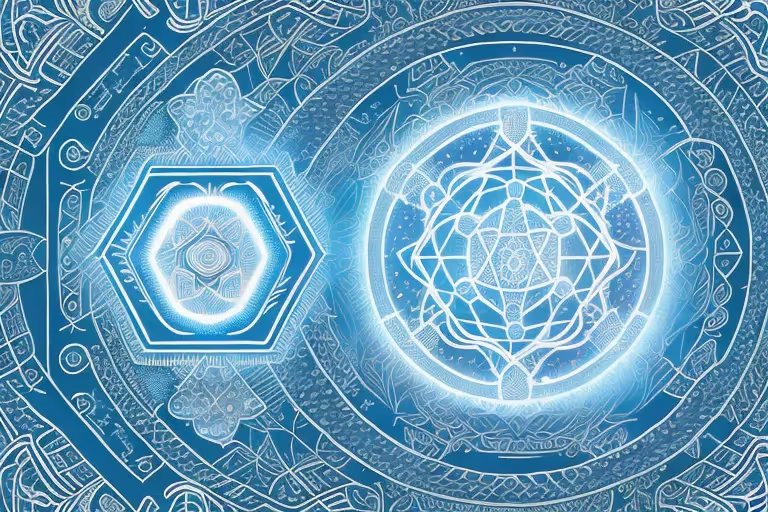Dzogchen meditation, also known as "The Great Perfection," is a profound practice rooted in Tibetan Buddhism. With its rich history and transformative nature, Dzogchen offers a unique path towards self-realization and spiritual awakening. In this article, we will explore the origins, principles, and benefits of Dzogchen meditation, while also addressing common misconceptions and questions.
Understanding Dzogchen Meditation
Dzogchen meditation, a profound practice that emerged in Tibet around the 8th century CE, has its roots in ancient Buddhist teachings. It draws inspiration from the Bon tradition and integrates it with the wisdom of Mahayana Buddhism. The aim of Dzogchen is to directly experience the innate nature of the mind and the ultimate reality beyond concepts and dualities.
The Origins of Dzogchen Meditation
Dzogchen meditation has a rich history that can be traced back to the ancient Bon tradition, which predates Buddhism in Tibet. The Bon tradition emphasizes the connection between the spiritual and natural world, and Dzogchen incorporates this holistic approach into its practice.
The integration of Bon teachings with Mahayana Buddhism gave rise to Dzogchen as we know it today. The 8th-century CE marked a significant turning point when the great Tibetan masters began to codify and systematize the teachings of Dzogchen, making it accessible to a wider audience.
During this time, renowned masters such as Padmasambhava and Vairotsana played instrumental roles in spreading the teachings of Dzogchen across Tibet. They transmitted the profound wisdom of Dzogchen to their disciples, who, in turn, became lineage holders and continued the transmission of this precious tradition.
Core Principles of Dzogchen Meditation
At the heart of Dzogchen lies the principle of "rigpa," which can be translated as "awareness" or "pure presence." Rigpa is the primordial state of consciousness that is vast, clear, and unobstructed. It is the inherent nature of every sentient being, yet often obscured by the veils of conceptual thinking and dualistic perception.
In Dzogchen meditation, practitioners engage in various practices to uncover and abide in the state of rigpa. These practices include meditation techniques that help to quiet the mind, cultivate mindfulness, and develop a deep sense of presence.
Through the practice of Dzogchen, one can transcend ordinary perception and gain profound insight into the nature of existence. By directly experiencing rigpa, practitioners can recognize the illusory nature of the self and the world, leading to a profound shift in their understanding of reality.
Furthermore, Dzogchen meditation emphasizes the integration of meditation into everyday life. It encourages practitioners to bring the state of rigpa into their daily activities, allowing them to live with greater clarity, compassion, and wisdom.
Overall, Dzogchen meditation offers a transformative path to awakening, inviting practitioners to explore the depths of their own consciousness and discover the boundless potential within.
The Role of Dzogchen in Tibetan Buddhism
Dzogchen's Place in Tibetan Buddhist Philosophy
In Tibetan Buddhism, Dzogchen holds a significant place as the highest and most direct path to enlightenment. It is considered the pinnacle of the innermost teachings, known as the "Great Perfection Vehicle." Dzogchen is not a separate sect or school; rather, it is integrated into the fabric of various Tibetan Buddhist traditions, shedding light on their practices and deepening their understanding.
Dzogchen, also known as the "Great Completion," is a profound and ancient teaching that originated in the Nyingma tradition of Tibetan Buddhism. It is said to have been transmitted directly from the primordial Buddha Samantabhadra to the first human master, Garab Dorje. This transmission is believed to have occurred outside of any formal religious institution, emphasizing the direct and experiential nature of Dzogchen.
Within Tibetan Buddhist philosophy, Dzogchen is often described as the highest and most subtle teaching, surpassing even the practices of sutra and tantra. It is considered to be the essence of all other teachings, encapsulating the ultimate truth of reality. Dzogchen teachings focus on recognizing the innate nature of one's mind, which is said to be inherently pure, luminous, and free from any conceptual elaboration.
The Influence of Dzogchen on Tibetan Buddhist Practices
Dzogchen has left an indelible mark on all aspects of Tibetan Buddhist practices. Its emphasis on direct experience has shaped the understanding and approach to meditation, visualization, and deity yoga. Dzogchen practitioners are encouraged to directly recognize the nature of their mind, bypassing conceptual thinking and intellectual analysis.
Through the practice of Dzogchen, practitioners learn to rest in a state of pure awareness, free from the distractions of discursive thoughts and emotions. This state of non-conceptual awareness is considered to be the key to unlocking the true nature of reality and attaining enlightenment.
Furthermore, Dzogchen teachings have greatly influenced the cultivation of compassion and the realization of emptiness within Tibetan Buddhist practices. The recognition of the innate purity and luminosity of one's mind is seen as the foundation for developing genuine compassion for all sentient beings. It is believed that by recognizing the inseparability of one's own mind and the minds of others, true compassion can arise naturally.
In addition to compassion, the realization of emptiness is a fundamental aspect of Dzogchen teachings. Emptiness refers to the absence of inherent existence in all phenomena. Through the practice of Dzogchen, practitioners are guided to directly experience the emptiness of their own mind, as well as the emptiness of all phenomena. This realization is said to be a crucial step towards liberation from suffering and the attainment of enlightenment.
In conclusion, Dzogchen plays a vital role in Tibetan Buddhism, offering a direct and experiential path to enlightenment. Its integration into various Tibetan Buddhist traditions has enriched their practices and deepened their understanding. Through the emphasis on direct experience, Dzogchen has shaped the approach to meditation, visualization, and deity yoga, while also influencing the cultivation of compassion and the realization of emptiness. The profound teachings of Dzogchen continue to inspire and guide practitioners on their spiritual journey towards ultimate liberation.
The Practice of Dzogchen Meditation
Preparing for Dzogchen Meditation
Before engaging in Dzogchen meditation, it is crucial to establish a strong foundation of ethical conduct, mindfulness, and concentration. This can be achieved through practices such as breath awareness, mindfulness of thoughts and emotions, and analytical contemplation. By cultivating these qualities, one can create a conducive environment for diving deeper into the realm of rigpa.
Techniques and Methods in Dzogchen Meditation
Dzogchen meditation encompasses a range of techniques and methods tailored to the needs and capacities of different practitioners. These may include resting in non-conceptual awareness, direct awareness of thoughts, recognizing and releasing patterns of grasping and aversion, and merging with the natural state of rigpa. The guidance of a qualified Dzogchen master is essential to navigate the intricate nuances of these practices.
The Benefits of Dzogchen Meditation
Spiritual Benefits of Dzogchen Meditation
Dzogchen meditation opens doorways to a profound spiritual journey that transcends the limitations of ordinary perception. By directly experiencing the nature of mind, practitioners gain insights into the true nature of reality, leading to the dissolution of ignorance and the cultivation of wisdom. This journey deepens spiritual connection, fostering a sense of interconnectedness and compassion towards all beings.
Psychological and Physical Benefits of Dzogchen Meditation
Beyond the spiritual realm, Dzogchen meditation has been found to have numerous psychological and physical benefits. Studies have shown that regular practice can reduce stress and anxiety, improve cognitive function, enhance emotional well-being, and promote overall physical health. The harmony between mind and body experienced through Dzogchen brings forth a sense of balance and equanimity.
Misconceptions and Common Questions about Dzogchen Meditation
Addressing Misconceptions about Dzogchen Meditation
Like any profound practice, Dzogchen meditation is not immune to misconceptions. Some may see it as a form of escapism or nihilism, but in reality, it is a path that embraces the fullness of existence while transcending dualistic concepts. Dzogchen is not about rejecting life but rather deepening our understanding of it and finding ultimate liberation within it.
Answering Common Questions about Dzogchen Meditation
Questions often arise regarding the compatibility of Dzogchen with other spiritual paths, the role of visualization in Dzogchen practices, and the need for a teacher. Each question deserves careful consideration, as the answers can shed light on the nuances of the practice and guide practitioners toward a deeper understanding.
In conclusion, Dzogchen meditation offers profound insights into the Tibetan Buddhist practice. Its origins and core principles make it a transformative path, integrating seamlessly into the fabric of Tibetan Buddhist philosophy and practices. By engaging in Dzogchen meditation, practitioners can experience profound spiritual, psychological, and physical benefits, while addressing common misconceptions and seeking answers to important questions. The journey of Dzogchen meditation holds immense potential for self-discovery and self-realization.
Remember, if you are interested in exploring Dzogchen meditation further, the Aura Health App provides resources and guidance to support your practice. With its user-friendly interface and curated content, the app can help you navigate the depths of Dzogchen and enhance your meditation experience.
Aura is Your All In One App for Meditation, Mindfulness Wellbeing
Find peace every day with one app for your whole well-being. There is no one-size-fits-all solution to mental well-being. Aura is the first all-in-one wellness app that learns how to best help you. Discover an endless library of expert-created tracks for your well-being, all taught by the world’s best coaches, therapists, and storytellers. With Aura's personalized recommendations, you can find peace every morning, day and night.



.webp)






.avif)

%20(1).avif)


.avif)
.avif)
.webp)


.avif)


















































































































.avif)

















.svg)









